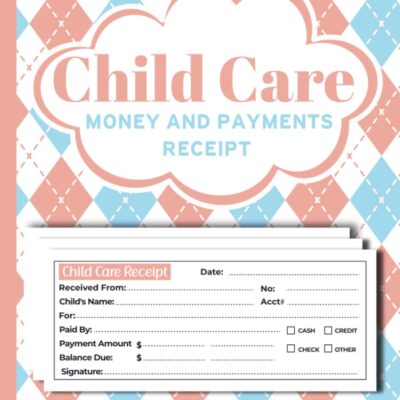
Family budgeting can feel overwhelming for many families, but it doesn’t have to be! Imagine transforming it from a source of stress into a powerful tool for achieving your family’s dreams. With the right approach, budgeting can be simple and even enjoyable. Let’s explore how you can create a family budget without the headaches.
Understanding Your Family’s Financial Goals
The first step to a successful budget is to know what you’re aiming for. What dreams do you have for your family? Setting clear financial goals is crucial.
Think about your short-term goals—these are things you want to accomplish within the following year. Maybe you want to save for a fun family vacation, pay off a credit card, or build an emergency fund. On the other hand, your long-term goals might include saving for your children‘s education, buying a home, or planning for retirement.
Gather your family around the table and brainstorm together. Ask everyone what they want to achieve financially. Getting input from all family members helps clarify your goals and makes everyone feel involved and excited about the journey ahead.
Assessing Your Current Financial Situation
Now that you have your goals, it’s time to understand where you currently stand financially. This step is essential for creating a budget that works.
Gather all your financial records, including pay stubs bills, bank statements, and debts you owe. It’s time to get organized once you have everything in front of you.
Make a list or a simple spreadsheet to see your finances. Start by listing your monthly income sources. Then, jot down all your monthly expenses into two main categories: fixed and variable costs.
Fixed expenses are those that don’t change, like rent or mortgage, insurance, and loan more information about your money and how much you can each month, such as groceries, entertainment, and dining out.
By seeing everything laid out, you’ll have clearer financial picture and how much you can allocate toward your goals.
⭐️ Tap the exclusive deal link to score top-quality items at ultra-low prices. 🛍️ These unbeatable deals are only available here. Shop now and save big!
Creating a Family Budget Plan
Once you understand your goals and financial situation, it’s time to create your budget plan. This is where the fun begins!
First, categorize your expenses as mentioned earlier. Knowing what you spend on fixed and variable expenses helps you see where your money goes.
Next, set spending limits for each category. Look at your past spending to determine how much you typically spend and then adjust based on your goals. It’s essential to be realistic; here, don’t—don’t set yourself up for failure with impossible limits!
Involve the whole family in this budgeting process. When everyone participates, it fosters teamwork and accountability. Discuss each category together, and make sure everyone understands the budget. Even your kids can help by suggesting how to save or cut back on unnecessary expenses.
Tips for Sticking to Your Budget
Making a budget is only the beginning; the tough part is sticking to it. These are some friendly tips to help you stay on track:
Use Budgeting Apps or Tools: Consider using a budgeting app like Mint or YNAB (You Need a Budget) to help you keep track of your spending. These tools can send you reminders about your budget limits and even show you how much you have left to spend in each category.
Set Up Automatic Savings Transfers: Treat your savings like a recurring bill. When you receive your paycheck, set up an automatic transfer to your savings account. This way, you’re consistently working towards your goals without even thinking about it!
Regularly Review and Adjust Your Budget: Life can be unpredictable, so don’t be afraid to tweak your budget. Set aside time each month to review your finances. This is a chance to see how you did and to adjust your budget if needed. If you overspent in one category, look for ways to cut back on another.
Making Budgeting Fun and Engaging
Who says budgeting has to be boring? Here are some fun ways to make budgeting more enjoyable for your family:
Family Goal-Setting Sessions: Schedule regular family meetings to discuss your goals and progress. This can be a fun bonding time where you celebrate small victories, whether reaching a savings target or cutting back on takeout.
Reward Systems for Meeting Budget Goals: Create a reward system for sticking to your budget. For example, if your family stays within the monthly dining-out budget, treat yourselves to a special outing, like a movie night or a picnic in the park.
Get Creative with Savings: Turn saving money into a fun challenge! Challenge your family to find the best deals while grocery shopping or devise creative, low-cost activities for family fun. You might be surprised at how much fun you can have while saving money.
⭐️Another surprise for you! Click to earn with me together🤝!
Handling Unexpected Expenses
Even with the best budgeting plans, unexpected expenses can pop up. Here’s how to handle them without stress:
Build an Emergency Fund: Aim to save three to six months’ worth of living expenses in an easily accessible account. This fund is your safety net in case something unexpected comes up costs like car repairs or medical bills. Knowing you have a cushion can ease a lot of stress.
Adjust Your Budget for Unplanned Expenses: Check your budget to see where you can cut back for now back if something unexpected comes up. For example, you could skip a few non-essential purchases this month to cover the surprise expense.
Celebrating Financial Wins
Recognizing and celebrating your financial milestones is critical to staying motivated. Here’s how to do it:
Acknowledge Milestones: Take time to celebrate every achievement, big or small. Did you pay off a credit card or reach a savings goal? Awesome! Make sure everyone knows about it.
Treat Yourself Occasionally: Consider treating your family once you hit a significant milestone. This could be as simple as a special dinner at home or a fun day out. Celebrating these wins helps everyone stay excited about the budgeting process.
Conclusion
Family budgeting as a family doesn’t have to be stressful! By understanding your financial goals, assessing your current situation, and involving the whole family, You can make a budget that really helps you. Remember to keep things flexible, review regularly, and, most importantly, make it fun!
If you want to learn my #1 Sports Research Triple Strength Omega 3 Fish Oil, Click Here Now.





